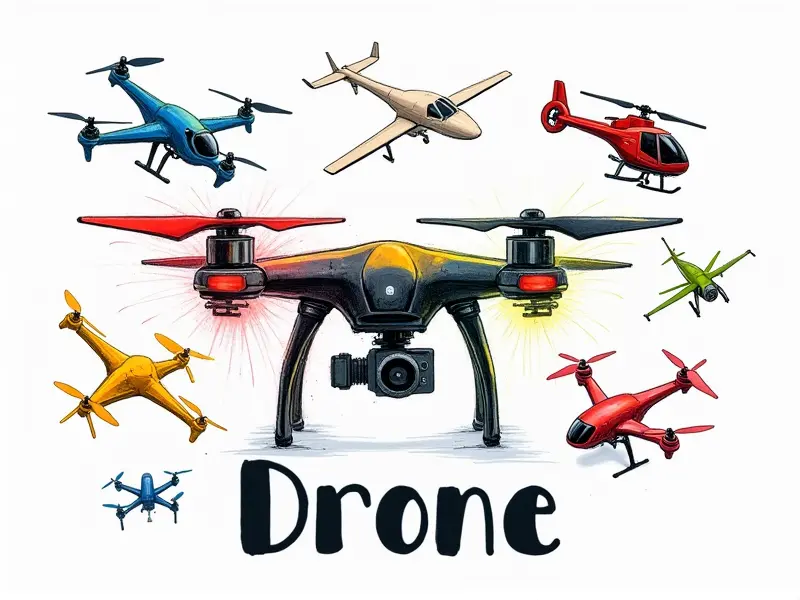What is elevator on an RC plane?

Understanding RC Plane Elevators
Elevators are a crucial component of remote-controlled (RC) aircraft, playing a pivotal role in controlling the pitch and altitude of the plane. These control surfaces are located at the trailing edge of the horizontal stabilizer, typically near the tail section of the airplane. Understanding how elevators function is essential for any RC pilot looking to enhance their flying skills.
How RC Plane Elevators Work
Elevators work by altering the angle of attack of the wing relative to the airflow, thereby affecting lift and drag forces. When a pilot moves the elevator control stick upwards, it causes the trailing edge of the elevator to move up, creating an upward force that pitches the nose of the plane up. Conversely, moving the stick downwards causes the elevator to pitch down, reducing lift on the tail and causing the nose to drop.
The Role of Elevators in RC Planes
The primary role of elevators is to control the pitch attitude of an RC plane, which directly influences its altitude. By adjusting the angle of the elevator, pilots can make precise adjustments to climb or descend, ensuring smooth and controlled flight maneuvers.
Controlling Pitch Attitude
- Climbing: Elevator up for increased lift on the tail and a nose-up pitch attitude.
- Diving: Elevator down to reduce lift, causing the nose to drop and descend.
RC Plane Control Surfaces: Elevators Explained
Elevators are just one of several control surfaces on an RC plane. They work in conjunction with ailerons (for roll) and rudder (for yaw) to provide full three-dimensional flight control. Proper coordination between these surfaces is essential for maintaining stable and responsive flight.
Coordination with Other Control Surfaces
- Aileron-Elevator Coordination: When turning, elevators are used in conjunction with ailerons to maintain altitude during the maneuver.
- Rudder-Elevator Coordination: Elevator inputs can be combined with rudder movements for coordinated turns and stability.
Why Elevators Matter for RC Pilots
Mastery of elevator control is fundamental to achieving proficiency in RC flying. Effective use of elevators allows pilots to execute precise maneuvers, maintain stable flight paths, and react quickly to changing conditions such as wind gusts or turbulence.
Enhancing Flight Performance
- Precision: Elevator control enables accurate pitch adjustments for optimal performance in various flight modes.
- Stability: Proper elevator use contributes to overall stability and responsiveness of the aircraft.
Beginner's Guide to RC Plane Elevators
New pilots often find elevators challenging due to their critical role in maintaining control. Here are some tips for beginners to get started with effective elevator usage:
Tips for New Pilots
- Practice Slow Flights: Start by practicing slow, steady flights to understand how elevators affect pitch.
- Use Small Inputs: Begin with small movements of the elevator control stick to avoid overcorrecting.
Optimizing Flight with RC Plane Elevators
To optimize flight performance, pilots should focus on fine-tuning their elevator control techniques. This includes understanding how different airspeeds and conditions affect elevator response and adjusting accordingly.
Tips for Advanced Pilots
- Adapt to Conditions: Adjust elevator inputs based on wind direction, speed, and turbulence.
- Smooth Transitions: Practice smooth transitions between climbing and descending phases of flight.
What Is Elevator Control in RC Planes?
Elevator control is the act of manipulating the elevator to change the pitch attitude of an RC plane. This involves understanding how different elevator positions affect lift, drag, and overall stability during various maneuvers.
Varying Elevator Positions
- Nose-Up: For climbing or maintaining altitude in headwind conditions.
- Nose-Down: To descend or maintain speed during tailwind situations.
Tips for Using RC Plane Elevators Effectively
To use elevators effectively, pilots should focus on developing a feel for the aircraft's response to elevator inputs. This includes understanding how different airspeeds and attitudes affect pitch control.
Developing Control Skills
- Sensitivity Adjustments: Fine-tune your RC transmitter settings for optimal sensitivity.
- Muscle Memory: Practice until elevator movements become second nature, enhancing overall flight control.
Exploring the Functionality of RC Plane Elevators
The functionality of elevators extends beyond basic pitch control. They play a vital role in maintaining stability during takeoff, landing, and all phases of flight. Understanding their full capabilities can significantly enhance your flying experience.
Multifunctional Use
- Takeoff: Elevators help manage the pitch angle for smooth liftoff.
- Landing: Precise elevator control is crucial for a safe and controlled touchdown.
RC Plane Elevator Basics: A Quick Overview
In summary, elevators are essential components of RC planes that allow pilots to control pitch, altitude, and stability. Proper understanding and application of elevator functions can greatly improve flight performance and overall piloting skills.
Key Takeaways
- Vital Control Surface: Elevators manage pitch attitude for stable and responsive flight.
- Multifunctional Role: They are crucial during takeoff, landing, and all phases of flight.
- Continuous Learning: Mastering elevator control is an ongoing process that enhances flying skills.
Conclusion
Elevators in RC planes serve as a fundamental tool for achieving precise pitch control. By understanding their functionality and mastering their use, pilots can enhance their flight performance and enjoy more rewarding flying experiences. Whether you're a beginner or an experienced pilot, elevators are key to unlocking the full potential of your RC aircraft.

